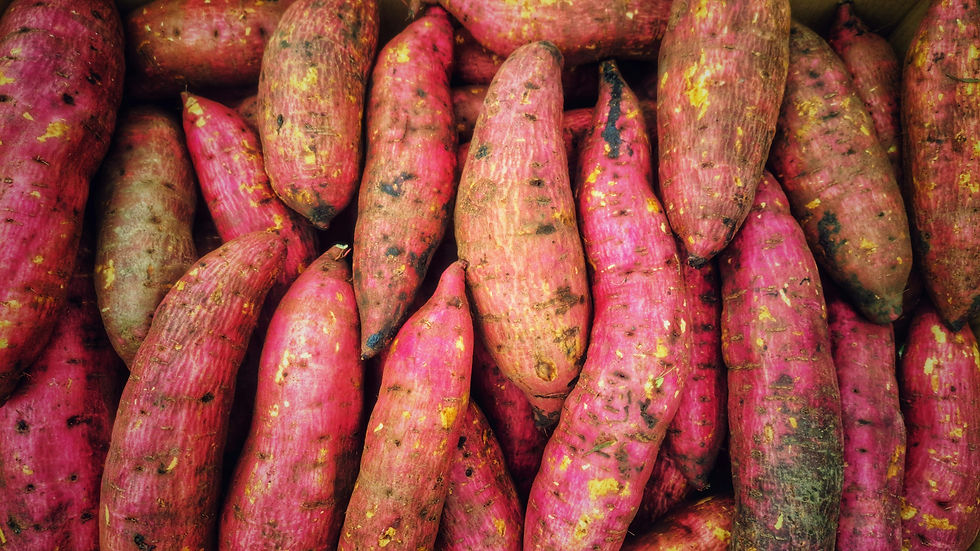Mushroom Capital of the World
- Chef Kelly Unger
- Oct 19, 2022
- 4 min read
Mushrooms are a big subject, huge, in fact. There’s a whole field of study and professional career around the study of mushrooms called mycology. “A mycologist is a scientist who studies fungi. The kingdom of fungi is quite large and, as a result, the nature of the work a mycologist performs is highly variable. Mycologists can be found working everywhere from breweries to pharmaceutical companies. Working mycologists typically have advanced degrees in mycology and some have completed postgraduate work.” according to practicaladultinsights.com
Even the subject of the benefits of mushrooms on our health is a huge subject. Mushrooms are beneficial to be sure and there is a growing body of evidence that points to all kinds of superfood and repairative status for mushrooms. At the very least, mushrooms play an important role in a healthy microbiome and supporting your immune system. I could fill several hours on the topic of the specific health benefits of each kind of edible mushroom. Since we don’t have time or space for that, I’ll boil things down to the most fun and useful pieces of info.
There are thousands of species of mushrooms and hundreds of edible mushroom varieties. As with most vegetables, we generally eat just a small handful of those. Of the varieties of mushrooms that we generally eat, lots of them can be cultivated or grown but some are wild and must be foraged by a professional forager who is trained and certified in wild mushroom identification. Mushroom foraging is like the CIA of the farming world. Spots where foraged crops grow are a TIGHTLY held secret. Divulging the location is just NOT done.
Our very own Kennett Square, PA is considered the Mushroom Capital of the World. According to the American Mushroom Institute, headquartered in Avondale, PA, the story of our mushroom capital goes something like this: “During the late 1800s, William Swayne was a successful florist in Kennett Square, PA. He had an idea to grow mushrooms beneath his greenhouse benches. He sent to England for spawn, and the results were encouraging enough that he built the first mushroom house in the area. His son, J. Bancroft Swayne, returning from college, took over the mushroom business and made it a commercial success, eventually developing a spawn plant and a cannery in addition to the growing houses.
Inspired by the Swayne success and the attractive price of mushrooms in city markets, others began the production of mushrooms as their principal occupation. For more than 100 years, mushroom farmers have been growing mushrooms in southeastern Pennsylvania. Today, more than 60 percent of all mushrooms produced in the U.S. are grown in Kennett Square, PA, and its surrounding areas, stretching to Berks County, PA and parts of northeastern MD. In 2020, Agaricus mushroom volume of sales totaled 796 million pounds, with PA accounting for 66 percent of the total volume of sales. According to a 2017 economic study, the PA mushroom industry has a footprint of $764 million.”
I’m including the link to the American Mushroom Institute website for you below. It’s a great place to learn more about how mushrooms grow and who the major PA mushroom farmers are. The next time you’re at the grocery store, look at the mushroom containers to check out where all of the varieties are from. They will likely all be from right down the road.
The mushrooms that are foraged in our area primarily are: chanterelles, hen/chicken of the woods, Turkey Tail and morels. Morels can sometimes be successfully cultivated but mostly they are foraged.
Some cultivated varieties you should see at the farmers markets are: of course the white button, maitake, shiitake, trumpet, crimini, portobello, pioppino, oyster, lions mane, Nameko, and Reishi. Oyster mushrooms come in some beautiful color variations - gray, pink, and yellow. And the best way to store mushrooms is in a paper bag in the fridge for approx 7 days.
Our own Doylestown Farmers Market is blessed with an amazing mushroom vendor, Primordia Mushroom Farm. And they are growing their own beautiful mushrooms, bringing in other locally sourced mushrooms they don't grow as well as have a relationship with a forager for those special seasonal varieties. This year we did not see chanterelles at all because of the drought.
As far as cooking is concerned, some mushrooms prefer roasting, like trumpet, and other more delicate mushrooms prefer going right into a boiling soup, but generally speaking just start with sauteing any mushrooms you get in olive oil or butter with garlic. Some mushrooms will take a few minutes to cook while other more sturdy mushrooms will take 10 minutes or so. NEVER salt your mushrooms while sauteing them. Salting them will cause them to release their liquid and will leave you with shrunken, shriveled shells of their former selves. Wait until your sauteing is complete and you’ve moved your pan off the heat to season them with salt. I love sauteing a nice variety of mushrooms together in unsalted butter with some garlic and eating them on top of a thick slice of sourdough bread, for the simplest mushroom experience. I also love using mushrooms with coconut milk in Thai style soups.
This week I’m sharing a recipe collection from Food & Wine magazine, Our Best 40 Mushroom Recipes. In this collection you’ll find delicious recipes like: Roasted Mushrooms in Red Wine Butter, Warm Mushroom Salad with Bacon Vinaigrette, Wild Mushroom Crepes with Sunny Eggs, and a Vegetarian Mushroom Sourdough Dressing for the holidays. Enjoy!




Comments